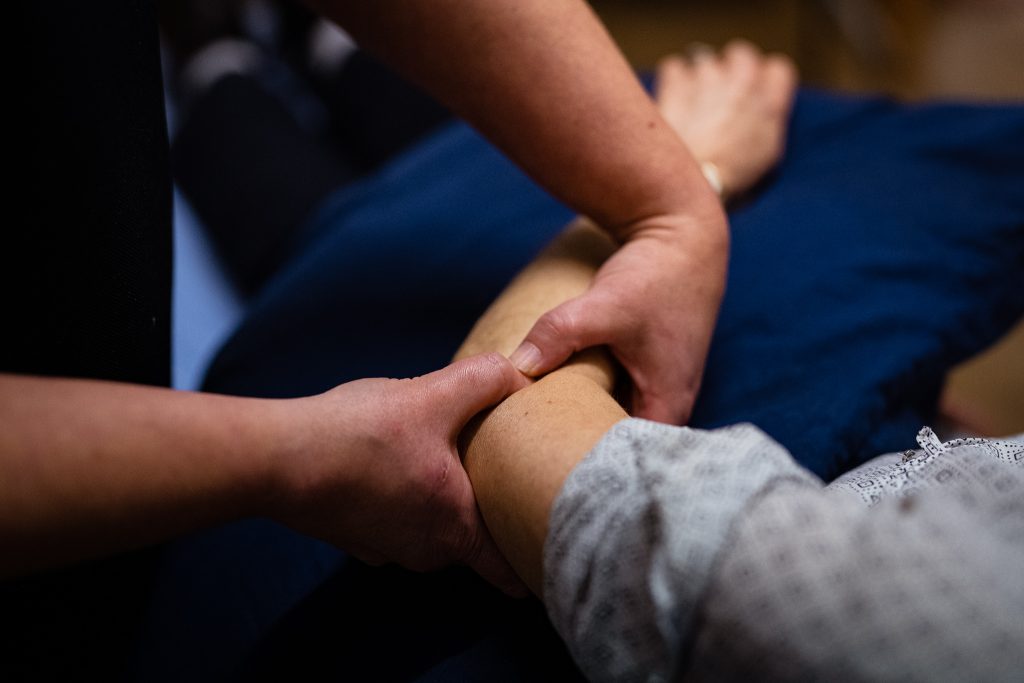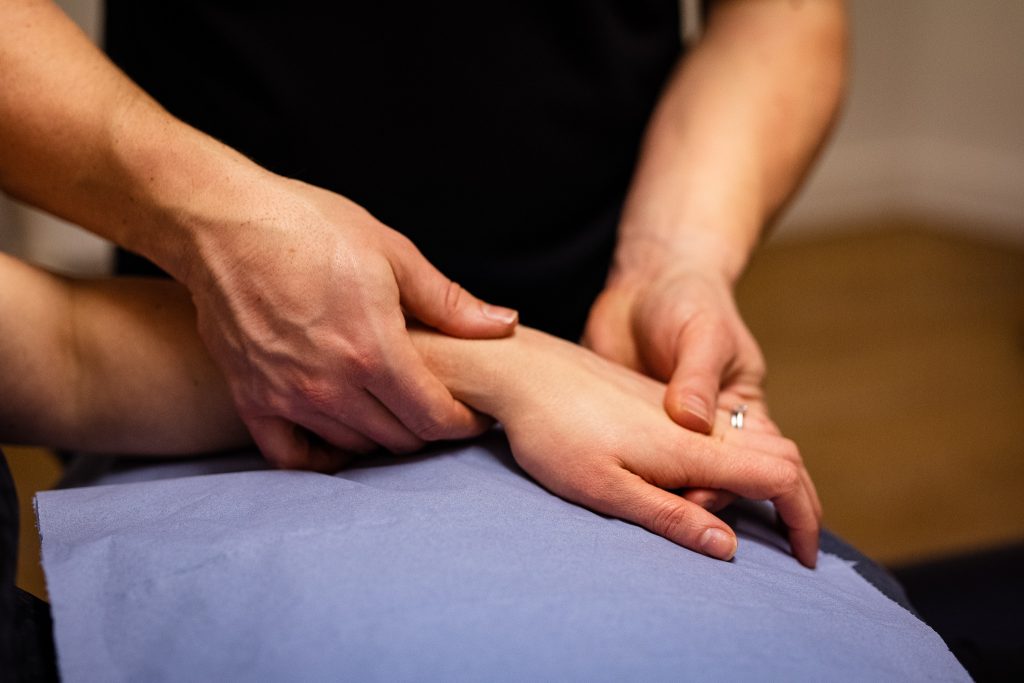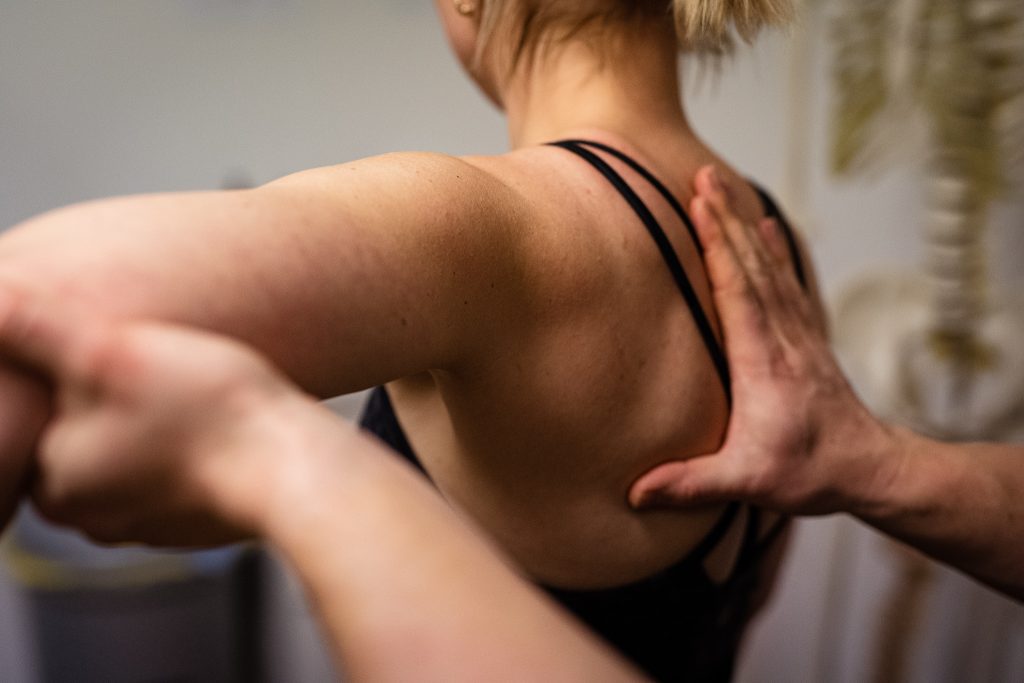Upper limb
We specialise in addressing and treating a wide range of upper limb conditions. From joint pain in the shoulders and elbows to wrist pain & repetitive strains, we offer bespoke treatments to alleviate your pain.

The most common joint pain in the upper body is focused in the shoulders, elbows, hands and wrists. Here are some of the most frequent health conditions in each area:

The most common joint pain in the upper body is focused in the shoulders, elbows, hands and wrists. Here are some of the most frequent health conditions in each area:

The most common elbow problems we treat at Delta are tennis elbow & golfer’s elbow (epicondylitis).
Epicondylitis is a condition where the tendons of the forearm develop pain and dysfunction where they attached to the bones in the elbow. You can feel pain on the inside or outside of the joint. This can be due to overuse, or due to degeneration of the tendons. You can commonly feel pain on gripping, lifting, and turning motions of the wrist.
The most common elbow problems we treat at Delta are tennis elbow & golfer’s elbow (epicondylitis).
Epicondylitis is a condition where the tendons of the forearm develop pain and dysfunction where they attach to the bones in the elbow. You can feel pain on the inside or outside of the joint. This can be due to overuse, or due to degeneration of the tendons. You can commonly feel pain on gripping, lifting, and turning motions of the wrist.


Carpal tunnel syndrome (CTS) is a condition that causes pressure, numbness and tingling in the wrist. It occurs when pressure is placed on the median nerve, which runs the length of the arm and carries on through a passage in the wrist called the carpal tunnel and ends in the hand.
The median nerve controls movement in all fingers except your little finger and when experiencing CTS the nerve doesn’t work properly. This leads to:

Carpal tunnel syndrome (CTS) is a condition that causes pressure, numbness and tingling in the wrist. It occurs when pressure is placed on the median nerve, which runs the length of the arm and carries on through a passage in the wrist called the carpal tunnel and ends in the hand.
The median nerve controls movement in all fingers except your little finger and when experiencing CTS the nerve doesn’t work properly. This leads to:

Frozen shoulder is an extremely painful condition that manifests as pain and restriction of movement in a shoulder joint. There can be no apparent cause for the pain, and symptoms tend to appear and worsen over time. The condition is also referred to as ‘adhesive capsulitis.’
Initially, the symptoms can just be pain on movement of the affected shoulder, which can be intermittent. The symptoms can then worsen to include restriction of movement in the shoulder, pain expanding down the arm becoming more constant, and difficulty sleeping at night.
At this point the symptoms reach a plateau, and after time can resolve. However, without treatment that process can last 1-3 years.
Frozen shoulder is an extremely painful condition that manifests as pain and restriction of movement in a shoulder joint. There can be no apparent cause for the pain, and symptoms tend to appear and worsen over time. The condition is also referred to as ‘adhesive capsulitis.’
Initially, the symptoms can just be pain on movement of the affected shoulder, which can be intermittent. The symptoms can then worsen to include restriction of movement in the shoulder, pain expanding down the arm becoming more constant, and difficulty sleeping at night.
At this point the symptoms reach a plateau, and after time can resolve. However, without treatment that process can last 1-3 years.


De Quervain’s tenosynovitis is a condition that impacts the tendons on the thumb side of the wrist. Symptoms of the condition are:
The main cause of De Quervain’s tenosynovitis is linked to overuse in the wrist and pressure on the tendons. When you grip, pinch or clench your hands, two tendons in the wrist and lower thumb move smoothly through a small tunnel that connects them to the base of the thumb.
Repeating these kinds of motions can irritate the sheath around the two tendons, causing swelling.

De Quervain’s tenosynovitis is a condition that impacts the tendons on the thumb side of the wrist. Symptoms of the condition are:
The main cause of De Quervain’s tenosynovitis is linked to overuse in the wrist and pressure on the tendons. When you grip, pinch or clench your hands, two tendons in the wrist and lower thumb move smoothly through a small tunnel that connects them to the base of the thumb.
Repeating these kinds of motions can irritate the sheath around the two tendons, causing swelling.
| Cookie | Duration | Description |
|---|---|---|
| cookielawinfo-checkbox-analytics | 11 months | This cookie is set by GDPR Cookie Consent plugin. The cookie is used to store the user consent for the cookies in the category "Analytics". |
| cookielawinfo-checkbox-functional | 11 months | The cookie is set by GDPR cookie consent to record the user consent for the cookies in the category "Functional". |
| cookielawinfo-checkbox-necessary | 11 months | This cookie is set by GDPR Cookie Consent plugin. The cookies is used to store the user consent for the cookies in the category "Necessary". |
| cookielawinfo-checkbox-others | 11 months | This cookie is set by GDPR Cookie Consent plugin. The cookie is used to store the user consent for the cookies in the category "Other. |
| cookielawinfo-checkbox-performance | 11 months | This cookie is set by GDPR Cookie Consent plugin. The cookie is used to store the user consent for the cookies in the category "Performance". |
| viewed_cookie_policy | 11 months | The cookie is set by the GDPR Cookie Consent plugin and is used to store whether or not user has consented to the use of cookies. It does not store any personal data. |